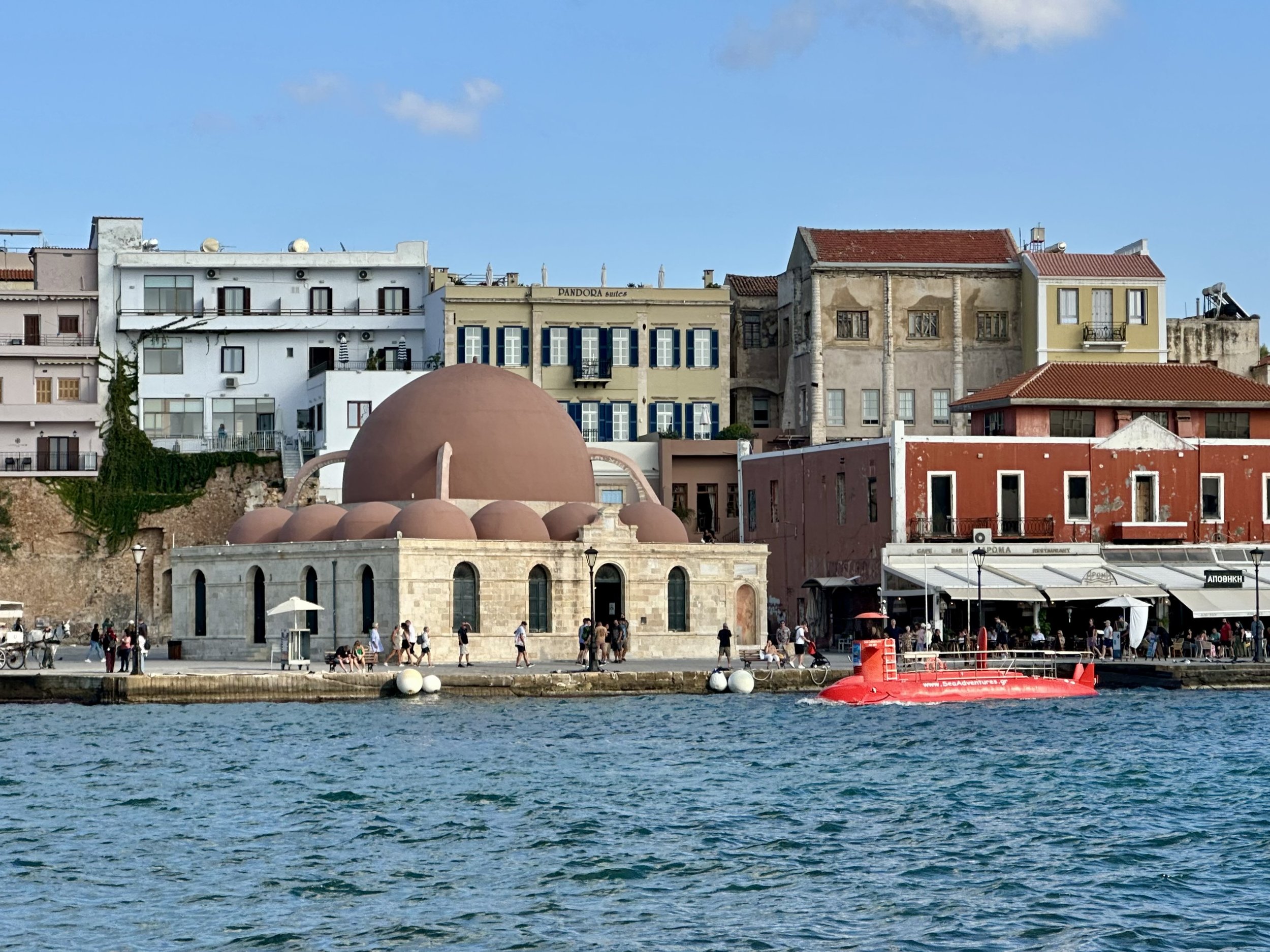Historic Chania
Chania (hah-NYA) has a multi-layered history that goes all the way back to the Minoan civilization, which developed on the island of Crete around 3,000 BCE and was the first advanced culture in what is now Europe. After the Minoan era, Chania was occupied, in turns, by Romans, Byzantines (who built a wall around the city), Venetians (who built a bigger wall), Ottoman Turks, Egyptians (briefly), and finally modern Greece. This map of Old town Chania shows both walls, most of which are still standing.
The most well-known part of Old Town Chania is the Venetian Harbor. During the 14th to 16th centuries, the Venetians constructed walls and bastions, including the harbor and its famous lighthouse, to protect the city. Large houses were built along the harbor in an Italianate style. It’s very picturesque!
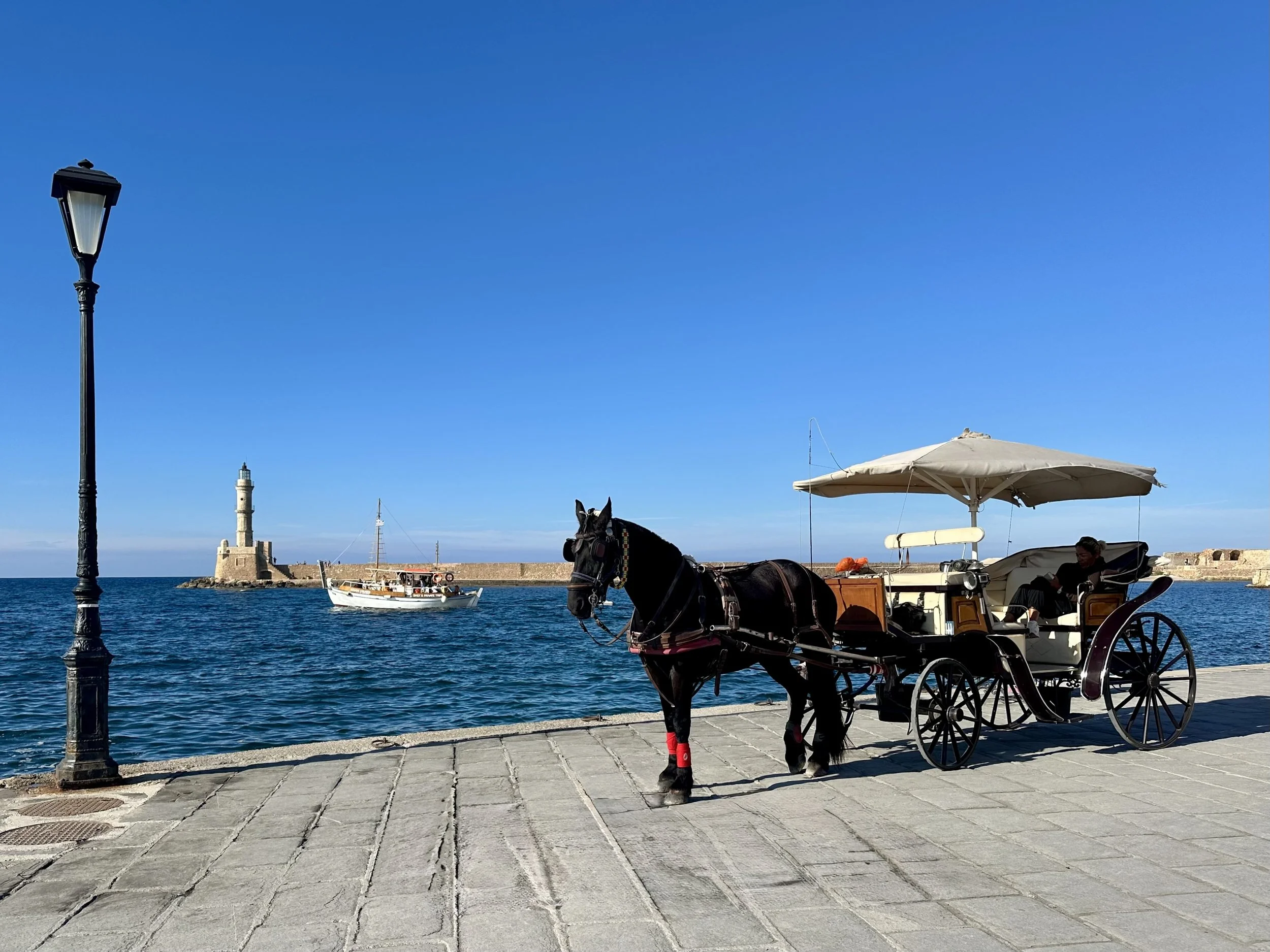
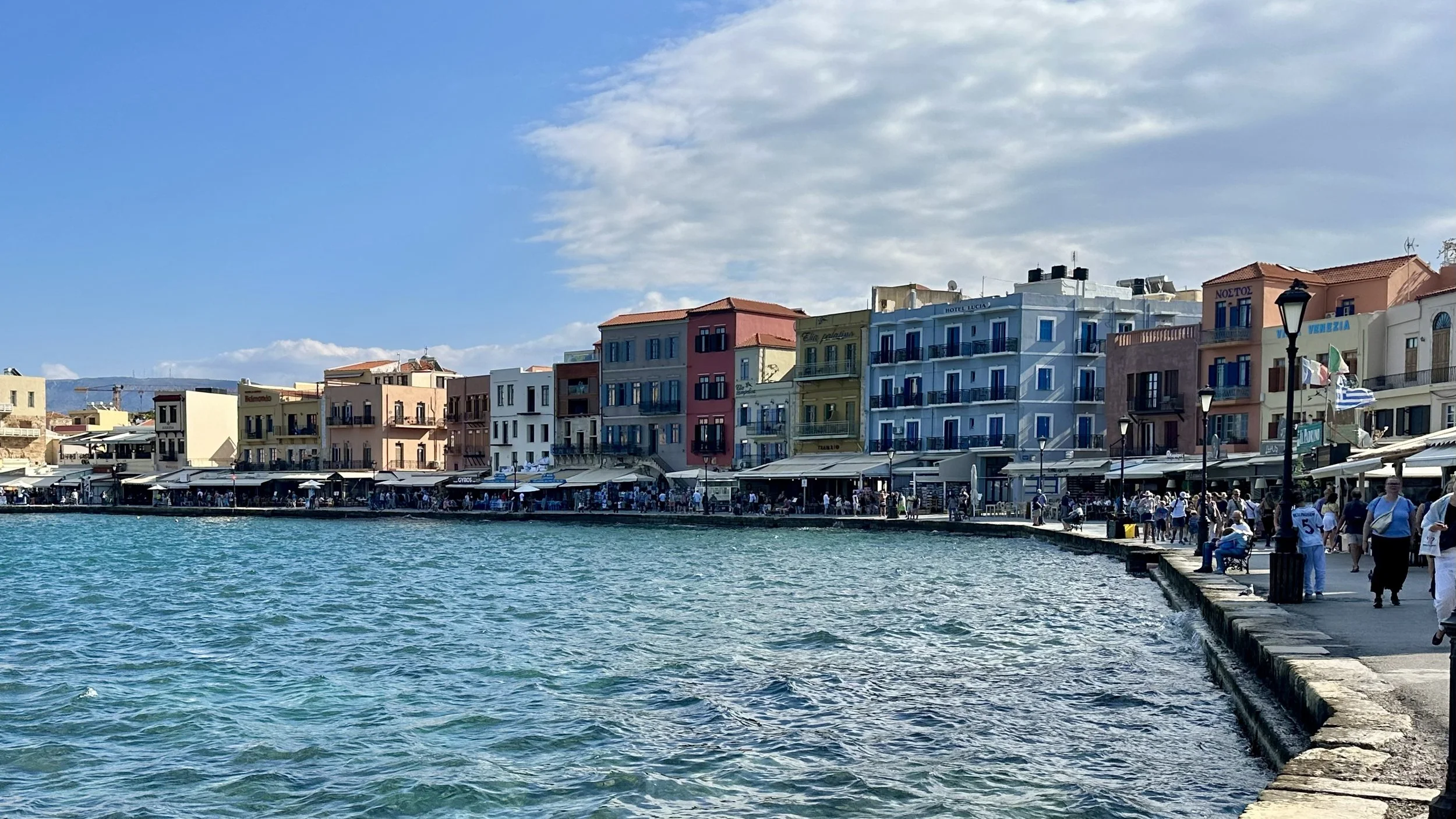
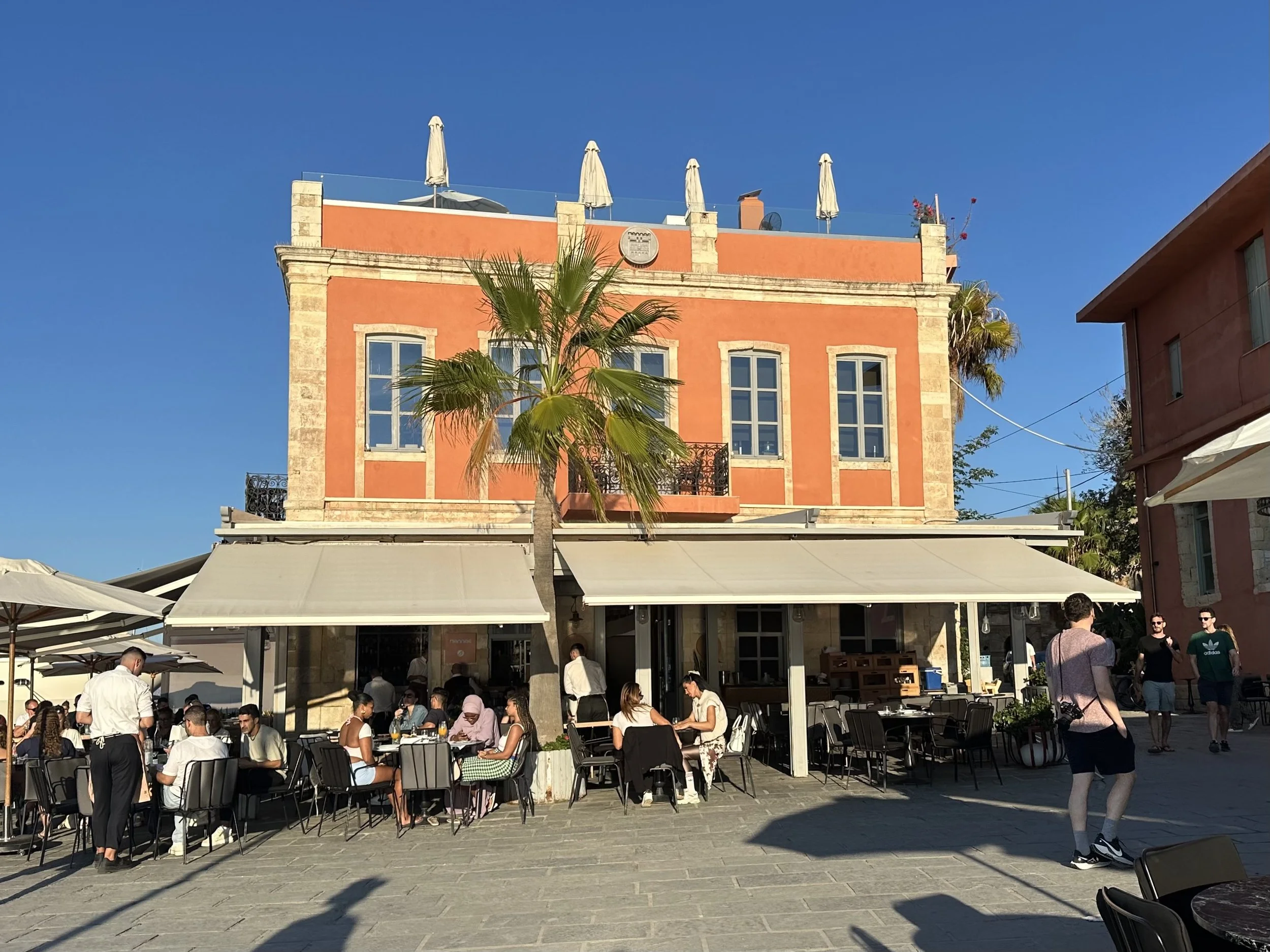
The Chania Lighthouse is a familiar and beloved landmark in the Venetian Harbor. You can read about our walk out to the lighthouse here.
Another notable structure in the Venetian Harbor is the Mosque of the Janissaries, also called Yiali Tzamisi (Seaside Mosque). It was built in 1645 when the Ottoman Turks conquered Crete. It is the oldest Ottoman building on the island, but no longer functions as a mosque.
Near the Venetian Harbor, but away from the bustle, are two interesting churches:
A Greek Orthodox cathedral with a very long name: Presentation of the Virgin Mary Holy Metropolitan Church. This was formerly a Venetian warehouse, then an Ottoman soap factory, before it was finally converted into a church in 1861.
The Church of Agios Nikolaos (St. Nicholas). This church has both a bell tower and a minaret. It was a 14th century Catholic cathedral that the Ottomans converted into a mosque. Now it is a Greek Orthodox church.


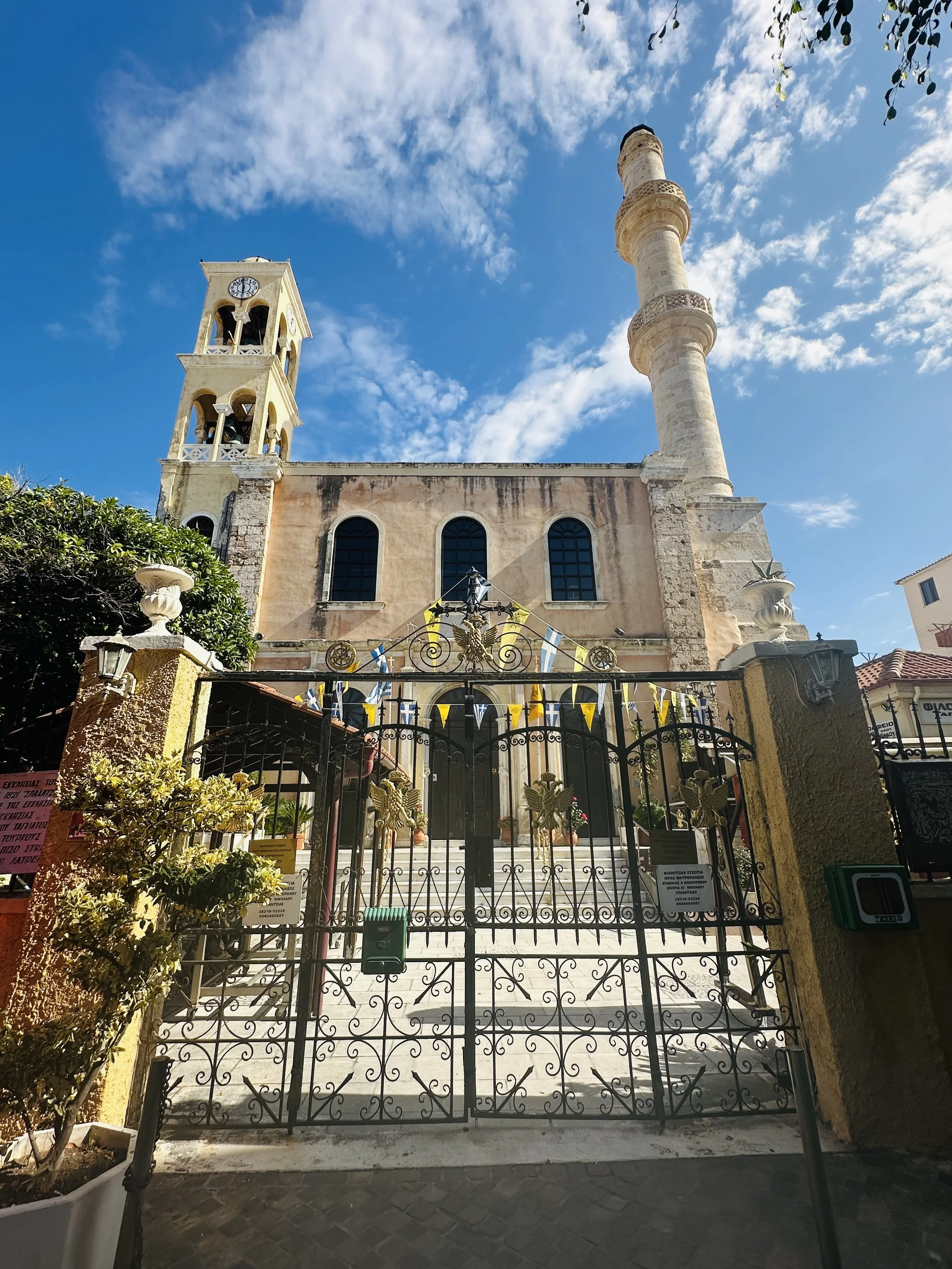
Beneath Old Town Chania are the ruins of the Minoan city of Kydonia. Its location directly beneath the modern city has made excavation extremely difficult. Glimpses of Kydonia are can be seen in sites scattered around the city, such as this unassuming spot next to the sidewalk. The remains of a Minoan Palace (2300-1900 BCE) have been unearthed at the base of the Byzantine wall (600-700 CE). On the other side of the wall were more excavation sites, though there didn’t seem to be any work ongoing.
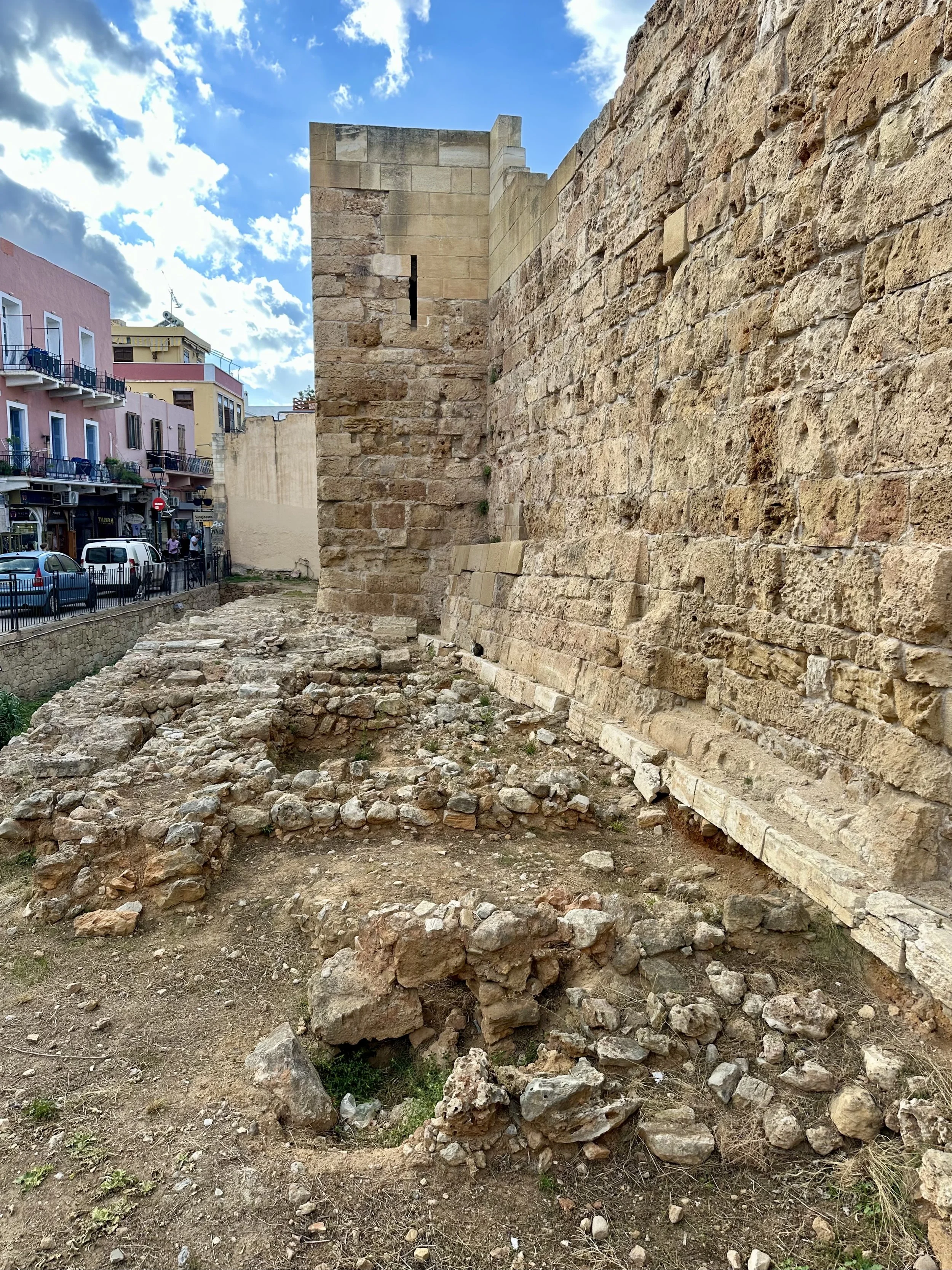
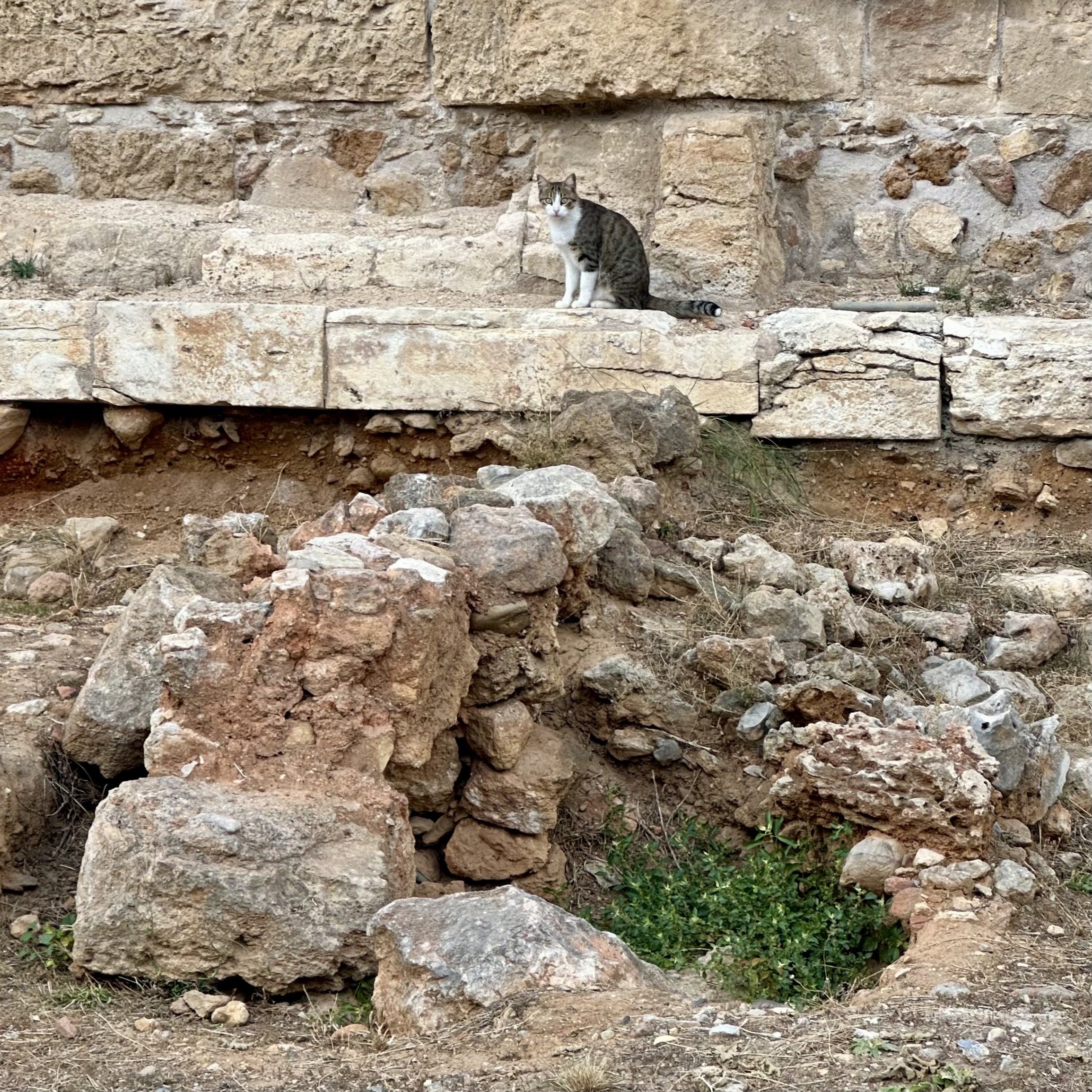

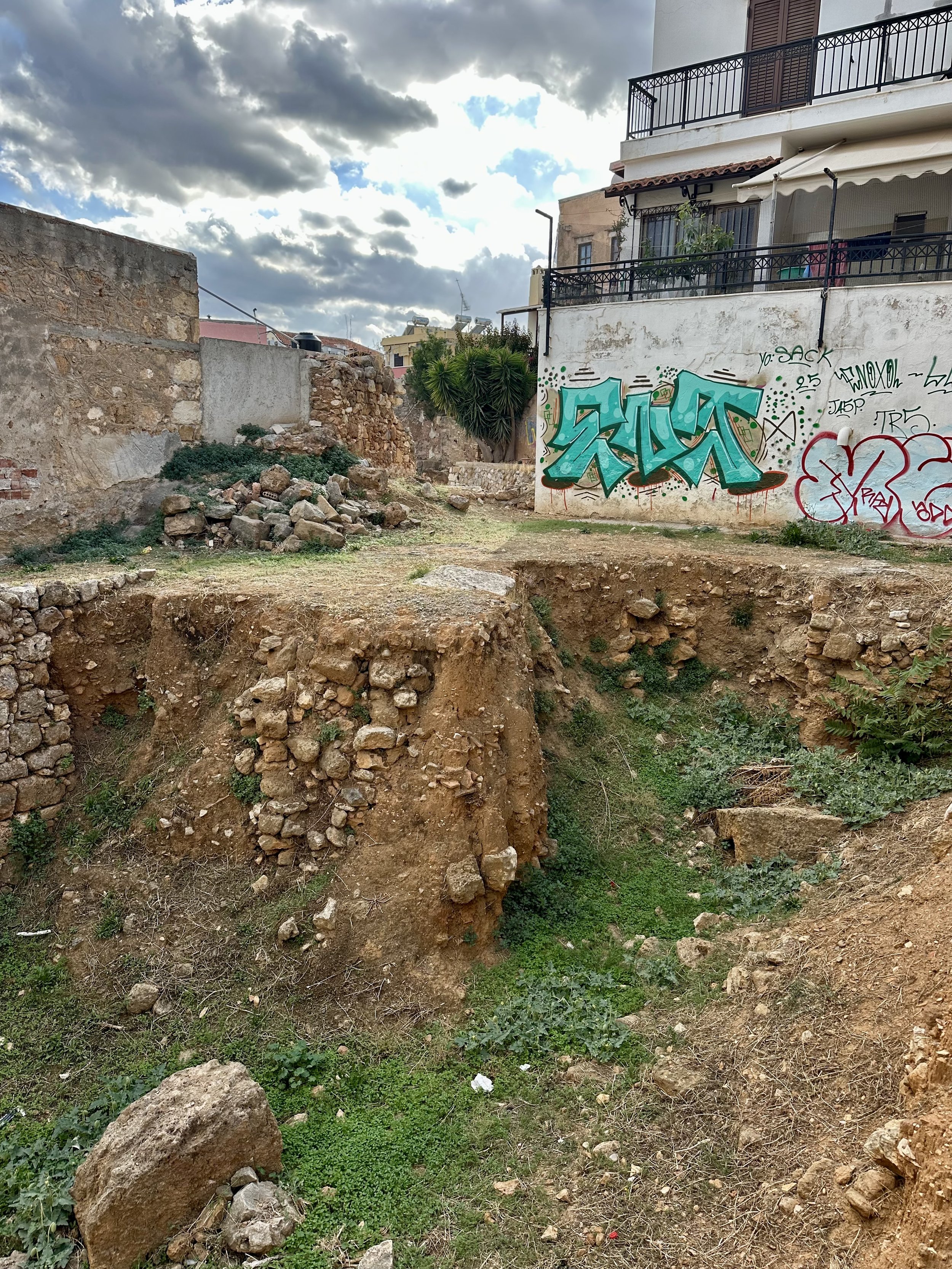
We enjoyed strolling the promenade around the Venetian Harbor and dining at the restaurants and tavernas, where we could sit outdoors and enjoy the view. Unfortunately, most of the stores in this area sold mass-produced souvenirs. So the shopping was too “touristy” for me. But I did enjoy wandering the narrow streets, which reminded me of Venice.
Postscript
How did the city come to be called “Chania”? No one really knows, but the prevailing theory is that after the Kydonian era, the village was named Alhania after the Minoan god “Velchanos.” The Islamic Arabs who ruled there in the 9th century began calling it al-Hanim (“the Inn”), which was similar but more familiar in their language. When the Arabs left, the “al” was dropped, and the name became the Greek Hania. The Venetians called it “la Canea.” I guess the name is just as layered and confusing as the city’s history.

